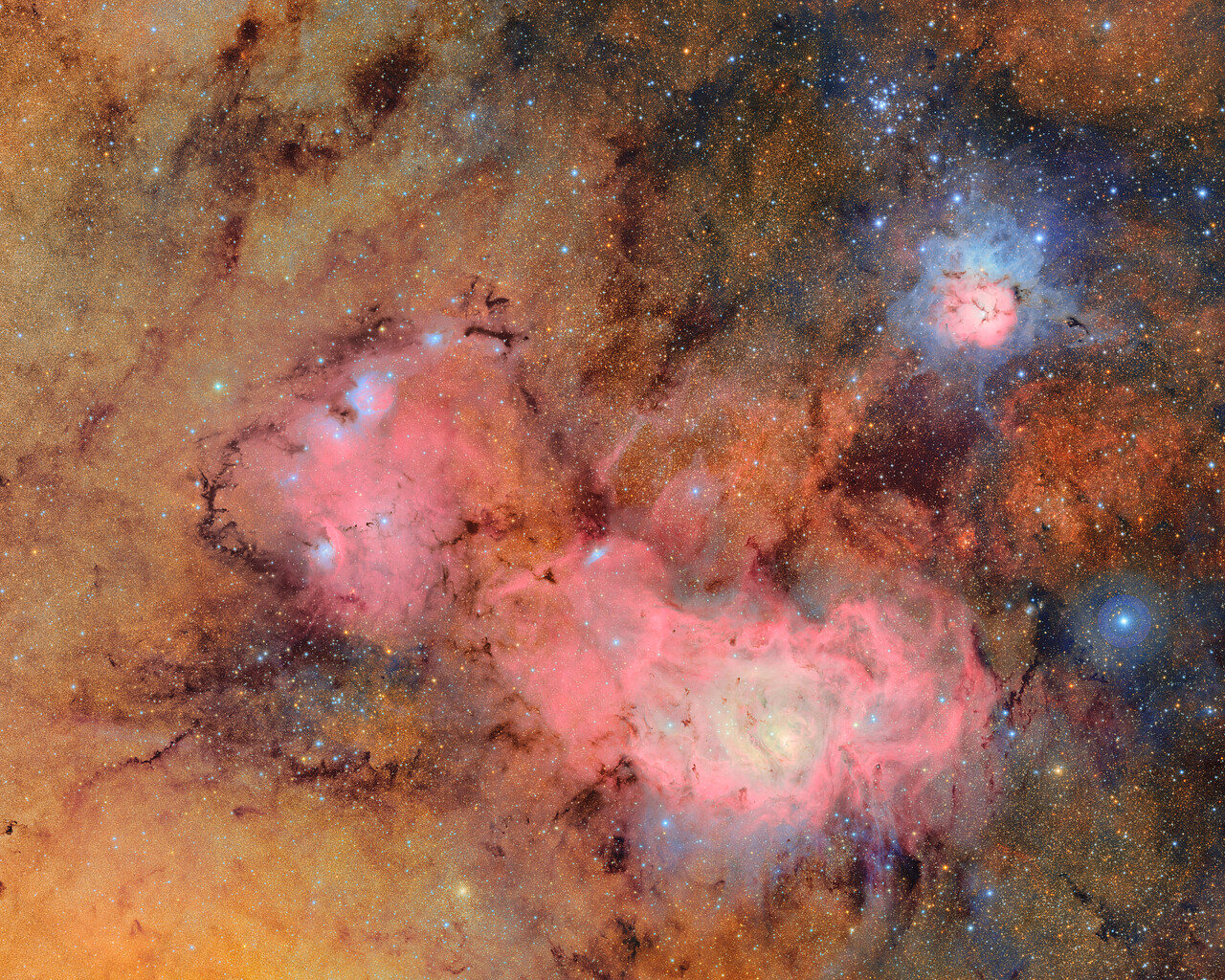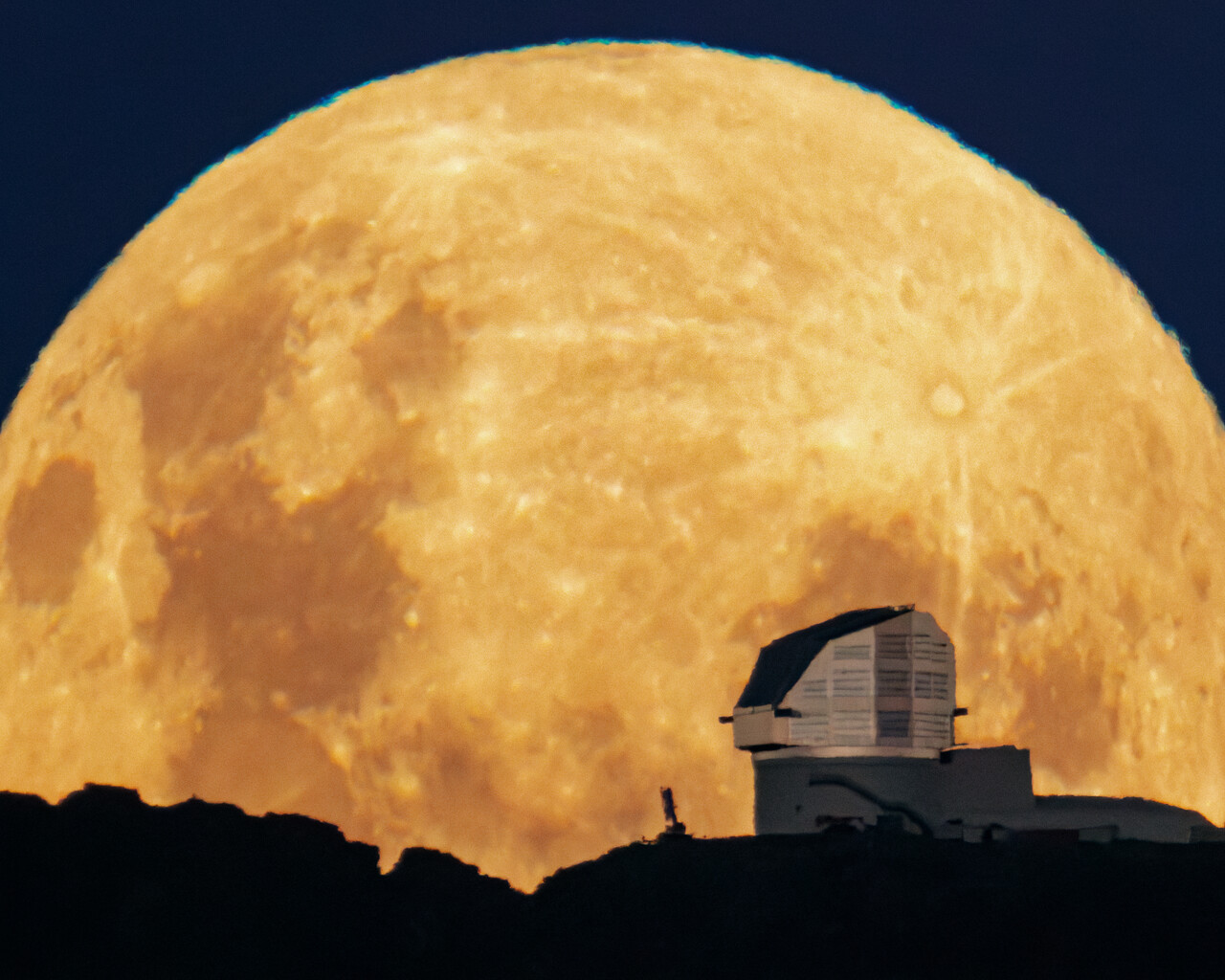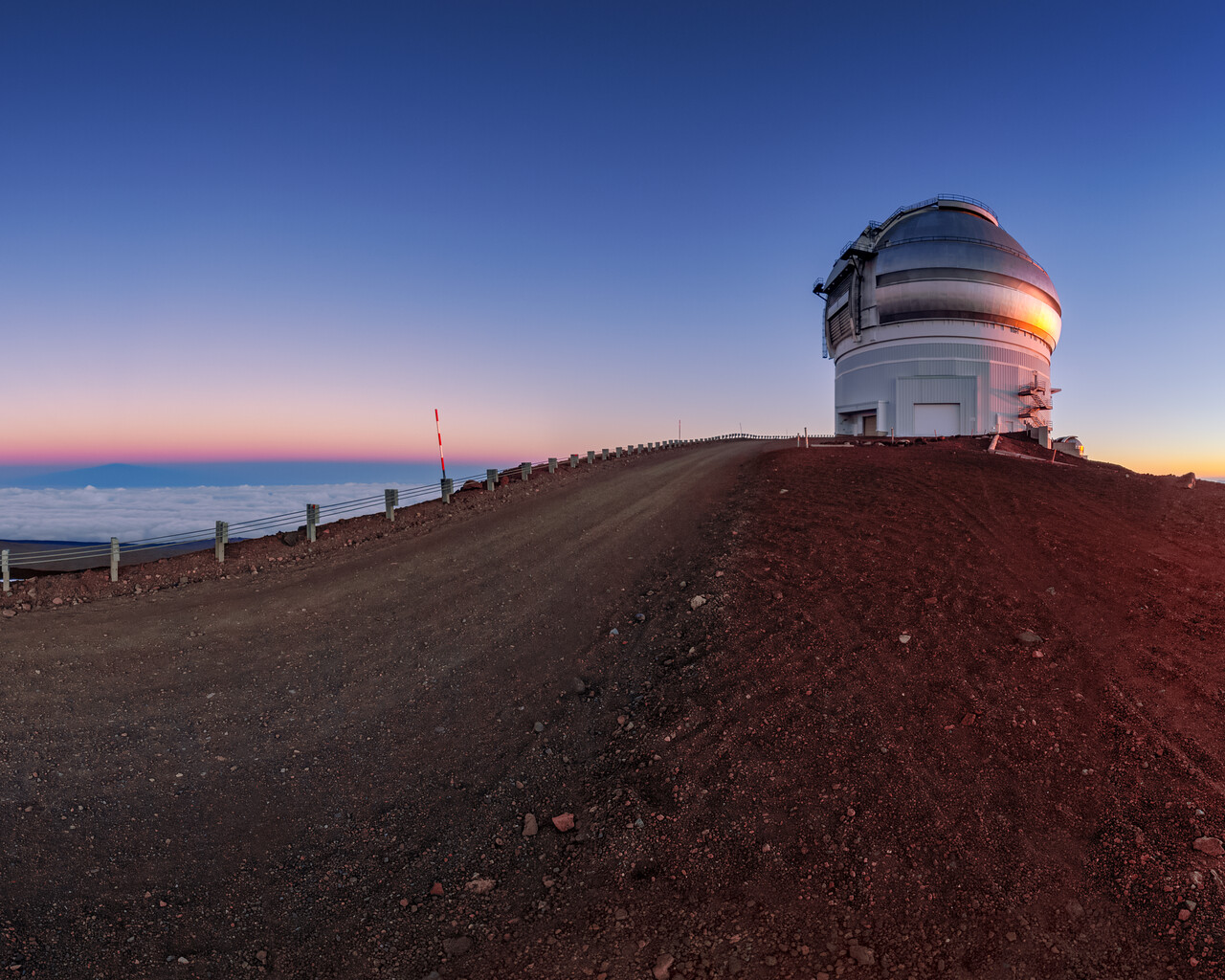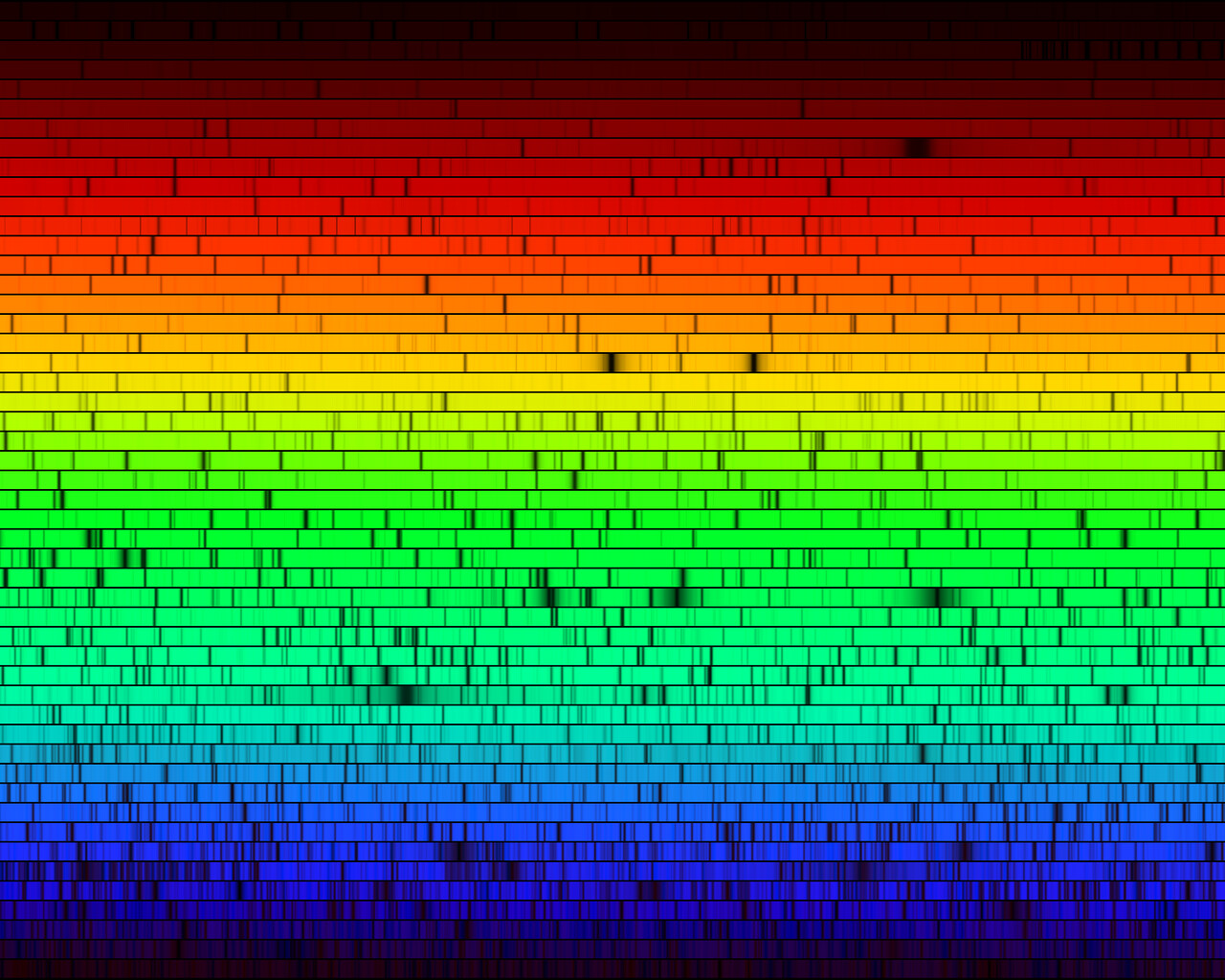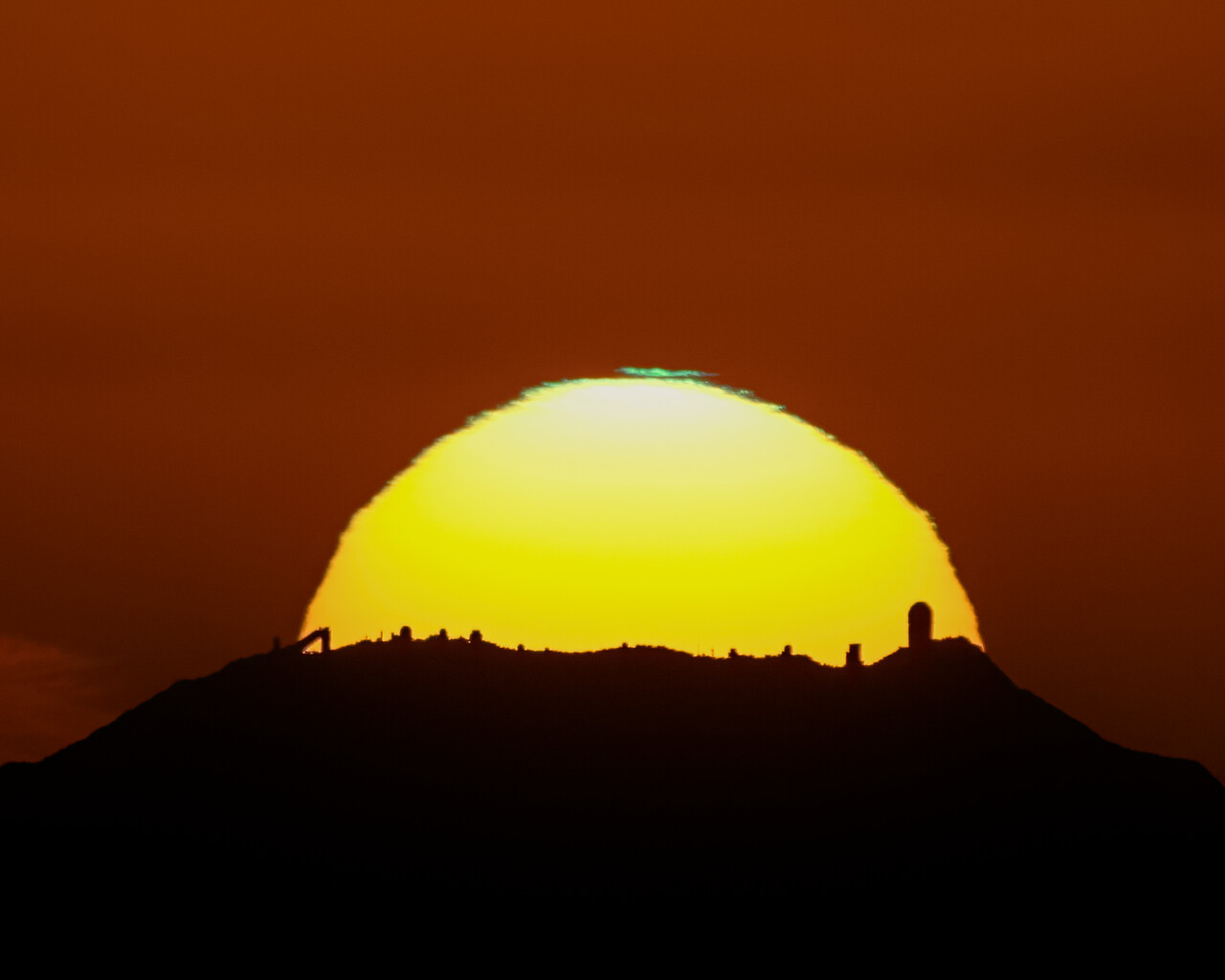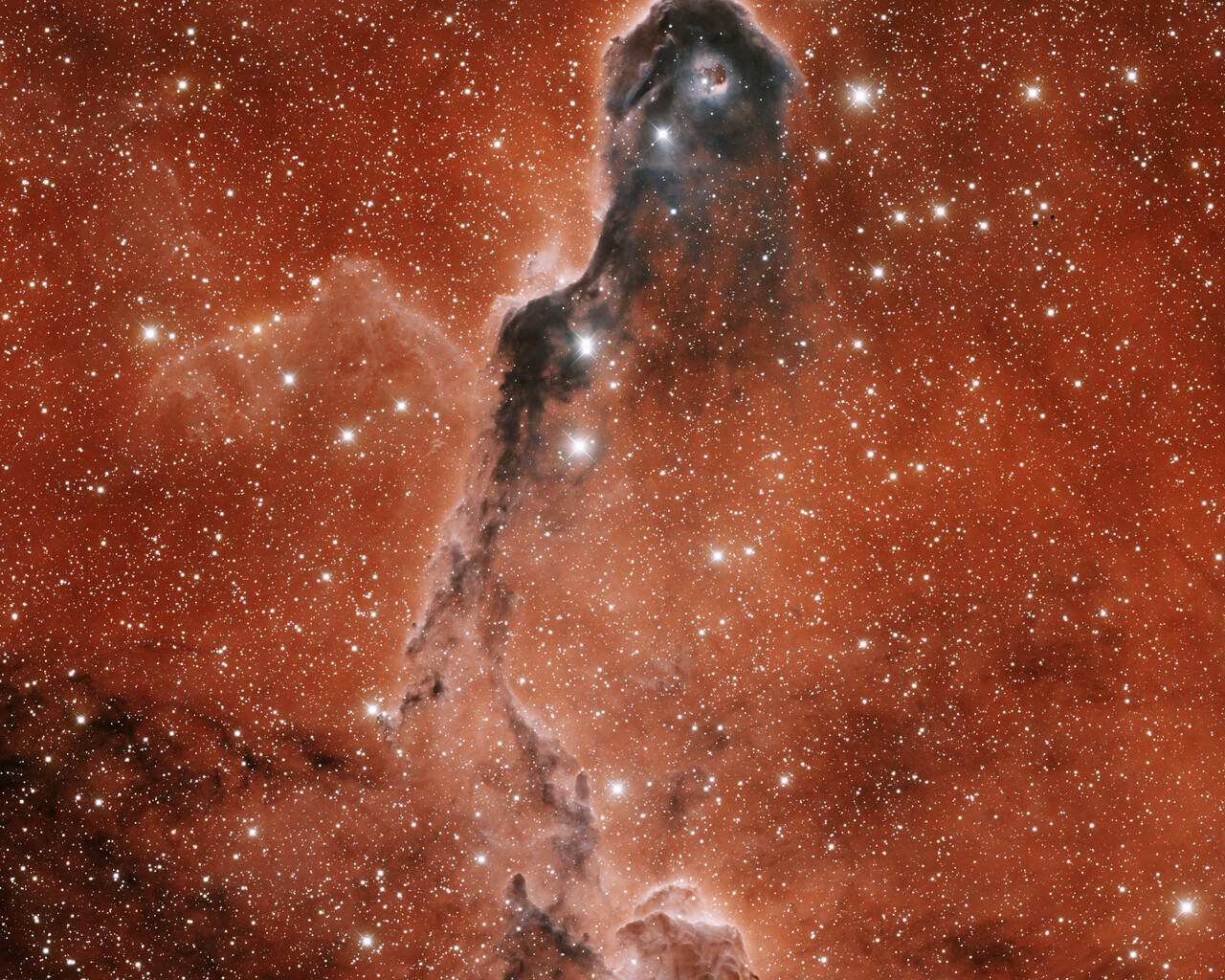79.
CTIO en el abismo del mundo
Los telescopios del Observatorio Interamericano Cerro Tololo (CTIO), un Programa de NOIRLab de NSF, a menudo gozan de bellos atardeceres. En la fotografía se aprecia el Telescopio de 4 metros Víctor M. Blanco (en primer plano), los Telescopios SMARTS de 1,5 metros, de 0,9 metros y 1 metro, el Telescopio Curtis Schmidt, y varios de los más de 40 telescopios que opera NOIRLab en los Andes chilenos. A 2.200 metros sobre el nivel del mar, y en su ubicación relativamente aislada, Cerro Tololo es el lugar perfecto para observar los cielos del hemisferio sur. De hecho, la cumbre recibe su …



